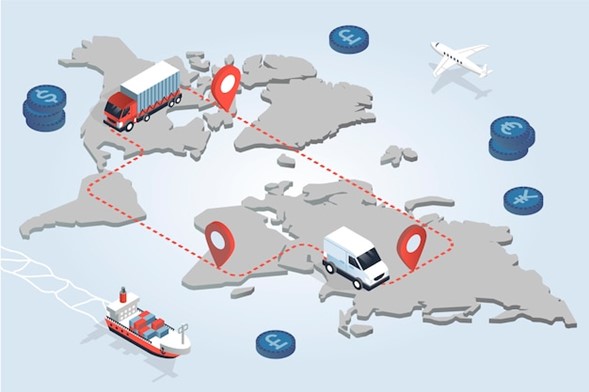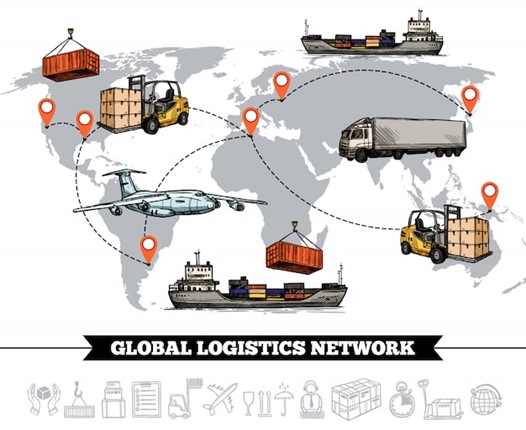Multimodal transportation refers to a delivery process that makes use of multiple modes of transportation under one contract. In this case, we must constantly keep in mind to sign a multimodal transport agreement. Transport occurs between a starting point in one nation and a destination in another nation
The goal of multimodal transportation is to use the most cost-effective method of transportation for each leg of the route and to reduce the quantity of times that cargo must be loaded and unloaded.
Various transport systems are supported by multimodal transportation. For instance, a freight transport can proceed by air or sea after beginning on the road. Depending on where the cargo is, this circumstance can take on various versions or situations.
Multimodal transportation is typically utilized in long-distance transportation since its primary logic strives to increase the modes of transportation while also increasing their effectiveness and cost-effectiveness.
In general, the logistics and transportation industries use multimodal transit because it is adaptable and effective for moving commodities.
Table of Contents
Goals and benefits
When employing this mode of transportation, the following objectives should be kept in mind:
lowering transportation costs
Enhancing the flow of the goods from the manufacturer to the consumer
Increasing the number of potential transport variations while reducing the delivery time
enhancing the standard of services
Increasing the number of loading options
lowering the possibility of product harm
The ordering party, who pays a single transport fee, benefits from choosing this mode of transportation as well.
How is Multimodal Transport done?

Multimodal transport is typically coordinated and executed by a freight forwarder or logistics provider, who acts as an intermediary between the shipper and various transportation providers. Here’s a general overview of the process:
- Planning: The logistics provider evaluates the shipment requirements, including the type of goods, the origin and destination, and the desired delivery time, to determine the best routing and mode of transport.
- Loading and transport: The goods are loaded onto the first mode of transportation at the origin, typically by truck. The goods are then transported to a hub or terminal, where they are transferred to the next mode of transportation, such as a ship or train.
- Documentation: The logistics provider handles all necessary documentation, including customs declarations, bills of lading, and other documents required for each mode of transport.
- Monitoring: The logistics provider continuously tracks the shipment and provides updates to the shipper on its status and expected arrival time.
- Delivery: The goods are unloaded from the final mode of transportation and delivered to the consignee. The logistics provider ensures that the goods are delivered in the same condition as when they were picked up.
This process can involve multiple transfers between modes of transportation and may take several days or weeks to complete, depending on the distance and complexity of the shipment.
A single contract for the transportation of products using at least two different modes of transportation is known as multimodal transport.
Example of these delivery steps are usually as follows:
- At the site of origin, goods are loaded into a truck and driven to a terminal, such as a railroad yard or port.
- At the terminal, the cargo is loaded onto a rail or ship for the remaining distance.
- The commodities are transported by train or ship to the following terminal, where they are then changed to a different vehicle or means of transportation for the remaining distance.
- The merchandise is delivered to the desired location.
What are the Multimodal Transport Types?
Moving goods from one location to another can be done using a variety of multimodal transport methods. Typical instances include:
- Sea-Air: A combination of ocean and air transport, where goods are shipped by sea to a port near the destination and then transported by air to the final destination. This type of multimodal transport is ideal for high-value or time-sensitive goods.
- Sea-Road: A combination of ocean and road transport, where goods are shipped by sea to a port and then transported by truck to the final destination. This type of multimodal transport is commonly used for large and heavy goods that cannot be transported by air.
- Rail-Road: A combination of rail and road transport, where goods are transported by rail from the origin to a terminal and then by truck to the final destination. This type of multimodal transport is commonly used for goods that need to be transported over long distances.
- Road-Air: A combination of road and air transport, where goods are picked up by truck at the origin and transported to an airport, where they are loaded onto an aircraft and flown to the final destination. This type of multimodal transport is ideal for time-sensitive and high-value goods.
- Inland Waterways-Road: A combination of inland waterways and road transport, where goods are transported by barge to an inland terminal and then by truck to the final destination. This type of multimodal transport is commonly used for goods that need to be transported over short distances.
These are some of the most common types of multimodal transport. The type of transport used for a particular shipment will depend on the specific requirements of the shipment, including the type of goods, the origin and destination, and the desired delivery time.

What are the advantages of Multimodal Transport?
There are several advantages of multimodal transport, including:
- Cost-effectiveness: By combining different modes of transport, multimodal transport can often result in lower overall transportation costs compared to using only one mode of transport.
- Increased efficiency: Multimodal transport allows for the shipment of goods in the most efficient and environmentally friendly manner possible, reducing transit time and increasing reliability.
- Improved flexibility: By combining different modes of transport, multimodal transport allows for greater routing flexibility and the ability to bypass transportation bottlenecks.
- Reduced handling: Multimodal transport minimizes the handling of goods, reducing the risk of damage and loss.
- Reduced carbon footprint: Multimodal transport can help reduce the carbon footprint of transportation by allowing for the shipment of goods in the most efficient and environmentally friendly manner possible.
- Access to remote locations: Multimodal transport allows for the shipment of goods to remote locations that may not be accessible by a single mode of transport.
- Improved safety: Multimodal transport can improve the safety of shipments by reducing the handling of goods and minimizing the risk of theft or damage.
These are some of the key advantages of multimodal transport. The specific benefits of multimodal transport will depend on the specific requirements of the shipment, including the type of goods, the origin and destination, and the desired delivery time.
Documents
“FIATA Multimodal Transport” is the key document for this type of transportation. Many problems for importers and exporters were made easier by its development. The forwarder is liable for the goods and damages sustained throughout the entire route, and not just on certain modes of transportation, as per the terms of this document.
These days, a lot of people use this mode of transportation. It offers a lot of advantages and sensible answers. With the help of this option, customers may swiftly, effectively, and affordably transfer their goods over various distances.



